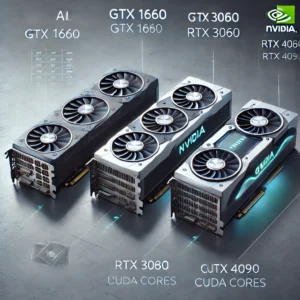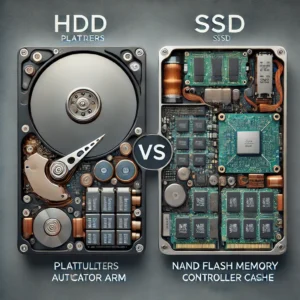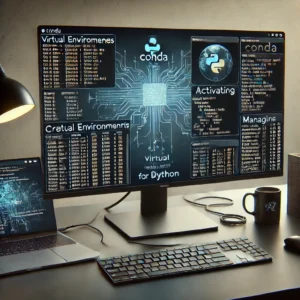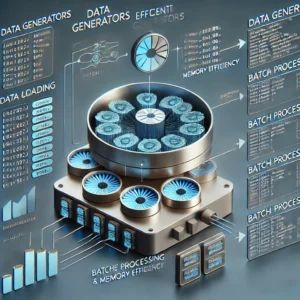Optimizing Your PC for AI Development: Essential Hardware and Software Tips
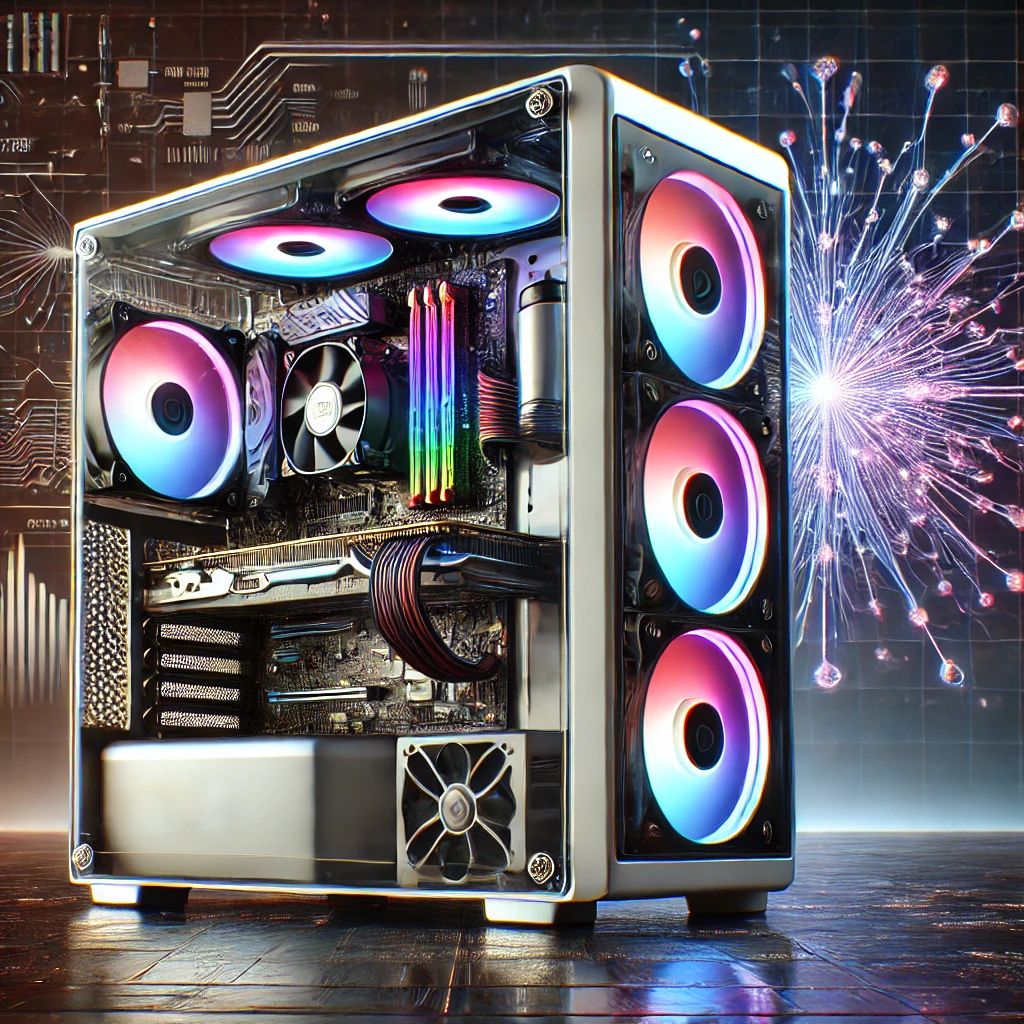
This guide provides essential hardware and software tips to optimize personal computers for AI development. Covering GPU selection, memory management, and configuration for efficiency, the guide ensures readers gain insights into maximizing their PC’s performance for machine learning.
Optimizing Your PC for AI Development
With artificial intelligence (AI) and machine learning (ML) gaining widespread popularity, personal computers are increasingly used for developing, testing, and deploying AI models. However, AI tasks are resource-intensive, often requiring substantial computing power. Optimizing your PC can significantly improve training speeds, reduce errors, and enhance model performance. This guide explores essential hardware and software adjustments for AI development on a PC, focusing on maximizing efficiency, stability, and performance.
Whether you are setting up for deep learning or exploring simpler ML algorithms, these tips will cover everything from GPU selection to memory and storage optimization, making your AI development process smoother and faster.
Choosing the Right Hardware for AI Development
A high-performance PC setup requires well-considered hardware components to handle intensive AI workloads effectively. Here’s an overview of each component’s role and optimization tips.
1. Graphics Processing Unit (GPU)
- Importance: The GPU is perhaps the most critical component for AI, especially for deep learning. GPUs can process multiple operations simultaneously, making them highly efficient for tasks like neural network training.
- GPU Recommendations: For beginners, an NVIDIA GPU with CUDA support (such as the GTX 1660 or RTX 3060) is recommended, as most AI frameworks support CUDA for GPU acceleration. High-end GPUs, like the RTX 3080 or RTX 4090, can dramatically improve training times for larger models.
- Memory Considerations: A GPU with at least 6GB VRAM is sufficient for basic tasks, but for deep learning models, 8GB or more is preferable.
- Optimization Tips: Ensure that GPU drivers are regularly updated. Install NVIDIA’s CUDA and cuDNN libraries, which are crucial for TensorFlow and PyTorch to utilize the GPU effectively.
2. Central Processing Unit (CPU)
- Importance: The CPU handles various operations, including data preprocessing and model management. While the GPU is critical for parallel processing, the CPU’s role remains significant.
- CPU Recommendations: A multi-core CPU, such as an AMD Ryzen 5 or Intel Core i7, is recommended for efficient processing of data and training operations.
- Optimization Tips: To optimize CPU usage, close unnecessary applications during AI training. Also, consider utilizing CPU parallelization options in libraries like TensorFlow, which can divide tasks across multiple cores.
3. RAM (Memory)
- Importance: AI development typically requires large datasets, which can consume significant memory. Sufficient RAM allows efficient data loading and model training without slowdowns.
- RAM Recommendations: For basic machine learning tasks, 16GB RAM is adequate. However, 32GB or more is advisable for deep learning, especially when handling large datasets.
- Optimization Tips: If RAM is a limitation, optimize memory usage by batching data, reducing dataset size, or using data generators to load data incrementally.
4. Storage (SSD vs. HDD)
- Importance: Storage impacts data loading speed, model saving, and overall system responsiveness. AI tasks benefit from faster data retrieval.
- SSD Recommendations: An SSD is preferable for storing datasets and models due to faster read/write speeds compared to HDDs. A 500GB SSD or more is advisable.
- Optimization Tips: Keep your dataset and model files on the SSD. To free up storage, delete unnecessary files and consider using cloud storage for backups.
5. Cooling System
- Importance: Prolonged AI tasks can lead to high temperatures, which affect hardware longevity and performance. Proper cooling ensures stable operations.
- Cooling Options: Liquid cooling is recommended for high-performance setups, while high-quality air cooling is often sufficient for basic configurations.
- Optimization Tips: Regularly clean dust from cooling fans and ensure adequate airflow within the case. Monitor temperatures with software like HWMonitor to prevent overheating.
Software Optimization Tips
Effective software configuration can enhance the performance and stability of AI development. This section provides practical software tips for improved efficiency.
1. Selecting the Right Operating System (OS)
- Recommended OS: Ubuntu Linux is widely used in AI development due to compatibility with AI libraries and greater control over resource management. Windows Subsystem for Linux (WSL) on Windows 10/11 is also effective for running Linux tools.
- Optimization Tips: On Linux, remove unnecessary services to free up resources. For Windows, avoid running unnecessary background applications and consider using WSL for Linux-compatible tools.
2. Python Version and Virtual Environments
- Python Installation: Installing Python 3.8 or later is recommended, as it ensures compatibility with popular AI libraries like TensorFlow and PyTorch.
- Using Virtual Environments: Virtual environments (via
venvorConda) are essential for isolating dependencies. They allow users to install specific library versions without interfering with system-wide packages. - Optimization Tips: Use lightweight virtual environments and remove unneeded packages to minimize memory usage.
3. Framework Installation and Setup
- Installing TensorFlow and PyTorch: Both TensorFlow and PyTorch offer GPU-accelerated versions, which significantly reduce training time. Install these libraries with GPU support to fully utilize your hardware.
- CUDA and cuDNN Configuration: For NVIDIA GPUs, ensure that CUDA and cuDNN are properly installed. These libraries optimize GPU usage, which is essential for efficient AI computations.
- Optimization Tips: Regularly update AI libraries to benefit from performance enhancements. Installing precompiled binaries from Anaconda can simplify CUDA and cuDNN setup.
4. Data Preprocessing Tools
- Using Pandas and NumPy: Libraries like Pandas and NumPy facilitate efficient data manipulation, which speeds up the preprocessing pipeline.
- Optimization Tips: Batch processing large datasets or use data generators to avoid memory overload. Minimize dataset size by cleaning and filtering data, especially when dealing with limited RAM.
5. Managing Dependencies and Packages
- Conda Environment Management: Conda allows users to manage multiple dependencies and switch between environments seamlessly. This is especially useful when experimenting with different frameworks.
- Optimization Tips: Regularly clean unused environments and packages to free up space. List dependencies in a
requirements.txtfile for easy replication across different setups.
Configuring System Settings for Optimal Performance
System settings can influence overall PC performance, especially during high-demand AI tasks. Adjust these settings to improve efficiency and prevent performance bottlenecks.
1. Power Settings
- Adjusting Power Plans: Set the computer to “High Performance” mode under Power Options in Windows. This setting allocates maximum resources to active tasks, which can accelerate AI computations.
- Optimization Tips: Disable sleep and hibernation modes during long training sessions to prevent interruptions.
2. GPU Settings for Machine Learning
- NVIDIA Control Panel Adjustments: Set the GPU power mode to “Prefer Maximum Performance” in the NVIDIA Control Panel. Additionally, set the GPU to handle graphics settings specifically for TensorFlow or PyTorch.
- Optimization Tips: Update GPU drivers regularly for compatibility with new AI frameworks. Allocate more VRAM to the active machine learning environment if possible.
3. Virtual Memory (Swap) Management
- Increase Virtual Memory: If RAM is insufficient, increasing virtual memory (swap) can provide temporary memory. However, virtual memory is slower than physical RAM, so prioritize hardware upgrades if needed.
- Optimization Tips: Use an SSD for swap memory to reduce latency. In Windows, virtual memory settings can be accessed under System Properties > Advanced > Performance > Settings.
4. Background Processes and Application Management
- Task Manager Optimization: Close unnecessary applications and services that consume CPU and memory. This action can free up resources for intensive AI tasks.
- Optimization Tips: Use Task Manager (Windows) or System Monitor (Linux) to identify resource-hogging processes. Disable startup programs that aren’t essential for development.
Optimizing AI Development Workflows
Efficient workflows can reduce the time and resources required for training and evaluation. This section covers techniques for streamlining processes.
1. Data Handling and Loading
- Efficient Data Loading with Generators: Use data generators in TensorFlow and PyTorch to load data in batches, reducing memory usage. This method also allows the processing larger datasets on systems with limited RAM.
- Optimization Tips: Use
.npyfiles (NumPy format) for quick loading and saving. The NumPy format reduces load time compared to CSV files.
2. Model Training Strategies
- Experiment with Smaller Models: Begin with a smaller model or fewer parameters, gradually increasing complexity as needed. This approach saves time and allows testing the setup before training larger models.
- Optimization Tips: Train in smaller epochs initially, then increase epochs based on model performance and resource availability.
3. Utilizing Transfer Learning
- Transfer Learning Benefits: Transfer learning uses pre-trained models, which can drastically reduce training time, especially for complex tasks. Frameworks like TensorFlow and PyTorch provide various pre-trained models for customization.
- Optimization Tips: Use a pre-trained model as a starting point for specific tasks (e.g., image classification) and fine-tune it to fit your dataset.
Frequently Asked Questions (FAQ)
- Is it necessary to have a high-end GPU for AI development?
While a high-end GPU is beneficial, especially for deep learning, it is not strictly necessary for basic ML tasks. Many entry-level GPUs or even CPUs can handle small models, though at slower speeds. - How much RAM is recommended for AI tasks?
For general machine learning tasks, 16GB RAM is usually adequate. For larger models or deep learning tasks, 32GB or more is ideal, especially when handling complex datasets. - What’s the best way to manage multiple Python environments?
Using Conda or virtual environments is recommended for managing different Python environments and dependencies. This keeps your system organized and prevents conflicts between libraries. - Does using an SSD improve AI model training speed?
SSDs improve data loading speed, which indirectly enhances model training, especially when handling large datasets. However, SSDs don’t significantly impact computation speed. - Are there free alternatives to expensive GPUs?
Many cloud providers offer limited free GPU resources, such as Google Colab or Kaggle’s kernels. These are useful for training larger models when hardware limitations are a concern.
Additional Resources for AI Development on PC
- NVIDIA CUDA Toolkit Documentation
The CUDA Toolkit provides libraries and tools for enabling GPU acceleration, crucial for optimizing AI performance on NVIDIA GPUs. - Anaconda for Data Science
Anaconda offers a streamlined approach to managing environments and dependencies, specifically for data science and AI. Learn more at Anaconda.com. - TensorFlow GPU Support Guide
TensorFlow’s GPU Support Guide outlines steps for installing and configuring GPU support for faster model training. - Google Colab
Google Colab provides free access to GPUs and TPUs, making it an excellent resource for beginners. Start with Google Colab. - Hugging Face for Transfer Learning
Hugging Face offers pre-trained models and tools for NLP, transfer learning, and more. Explore at Hugging Face.
Optimizing a personal computer for AI development involves both hardware and software considerations. From selecting suitable GPUs and CPUs to configuring memory and managing software dependencies, every aspect plays a role in ensuring smooth, efficient performance. By following the recommendations in this guide, readers can maximize their PC’s potential and achieve faster, more reliable results in AI and ML tasks.
A well-optimized system not only speeds up the training process but also prevents potential issues, such as system crashes or overheating, during intense computations. With this foundation, readers can explore more advanced AI development techniques confidently and efficiently.

